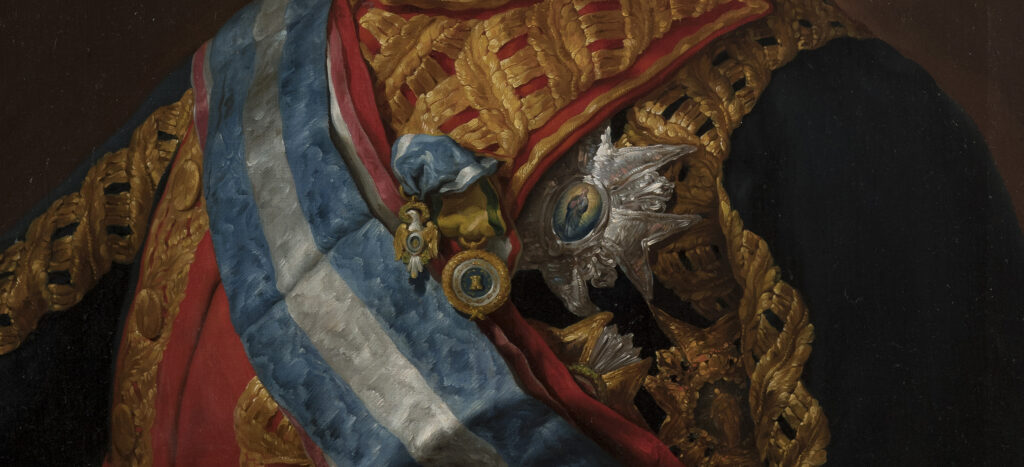The museum and library collections document and illuminate the founding and history of the Society of the Cincinnati and the story of Anderson House and its occupants. These collections provide insights into subjects such as the purpose and iconography of the Society, public views of hereditary organizations, nineteenth- and twentieth-century remembrances of the Revolutionary War era, the construction and use of Anderson House, and the lives of Larz and Isabel Anderson. The Society’s collections also include items documenting the American Revolution and its legacy, which are discussed in detail on the website of the American Revolution Institute of the Society of the Cincinnati. Click here to learn more about the Society’s Revolutionary War collections.
The museum collections specialize in portraits of prominent Society members, depictions of Society namesake Cincinnatus, Eagle insignias, Society porcelain patterns, and other art and artifacts that document the history, ideals, and symbols of the Society of the Cincinnati. Many of the portraits depict American and French officers who became original members of the Society, including works by leading artists such as Charles Willson Peale, Ralph Earl, Gilbert Stuart, John Trumbull, and Samuel F. B. Morse. The Society owns the most extensive and important collection of its own insignia—called the Eagle—in the world. This collection includes the Diamond Eagle, presented to George Washington in 1784 by officers of the French navy and worn on ceremonial occasions by each of his successors as president general of the Society of the Cincinnati.
The library houses the archives of the Society of the Cincinnati, which include the official correspondence, minutes and proceedings, and artwork relating to creation of the Society’s emblems of membership. The most precious document in the archives is the original manuscript Institution of the Society of the Cincinnati, completed in the summer of 1783 and signed by George Washington, Henry Knox, and thirty-four other founders of the Society. Complementing the early archives, the library collection holds private correspondence among members and other observers of the Society, as well as rare books and pamphlets, prints, photographs, and ephemera relating to the Society’s history and activities. Of special interest are manuscript and published sources on the early controversy over the hereditary aspects of Society membership, which swirled up soon after the Society was founded in 1783—and died down before the decade was over.
The Anderson House collection, assembled by Larz and Isabel Anderson, features European and Asian fine and decorative arts, as well as historical American artifacts reflecting their world travels and their devotion to family and country. The principal artifact is the mansion itself, designed and built by the Boston firm Little and Browne, which features superb wall and ceiling decorations, murals painted by leading artists of the day, and spaces designed to showcase the Andersons’ collection of tapestries, family portraits, and other treasures. The library collections hold publications by and about the Andersons (including thirty-eight travelogues, children’s books, plays, works of poetry, and family memoirs written by Isabel Anderson), as well as Larz Anderson’s typescript journals, family correspondence, inventories, invoices, and photographs. A highlight is a collection of ninety-seven presentation photographs of the exterior and interior spaces of Anderson House taken in 1910 by the noted American photographer Frances Benjamin Johnston. The museum and library collections also contain items documenting the appearance of the mansion, how it was used, and important events that occurred there since the Society took ownership of it in 1938.

Search the Collections
Visit our online museum database, library catalog, and Digital Library to explore the larger collections of the Society and the American Revolution Institute.